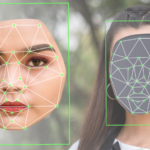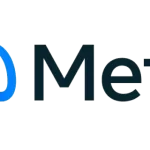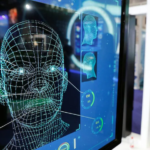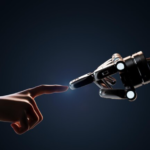This article indigenises the Internet and the global digital eco-system which is often called the Web or digital network, and has been specifically written to assist with understanding Data sovereignty, Internet, systems, robotics, algorithms and Artificial Intelligence (AI) from a customary Māori perspective.
For those who have been reading my series of articles, this is the “Taha Wairua” aspect of Sir Mason Durie’s Tapa Whā model (Durie, M., 1984).
Intended Audience
- Kura Kaupapa Māori and teachers of students who based on Ministry of Education research, lack resources that incorporate mātauranga Māori and modern-day technologies.
- Māori Peoples, whānau, hapū, Iwi and Māori Organisations interested in the taha wairua aspect of Sir Mason Durie’s Tapa Whā model and its relation to Māori Data and the digital eco system.
- Māori academics and Māori digital practitioners interested in Tikanga Māori and Mātauranga Māori within the digital ecosystem and Māori Data Sovereignty.
Introduction
Research states that within kaupapa Māori education there is a lack of education resources for digital education, and how modern technologies can be described using Māori epistemologies. There is also a gap in knowledge of the traditional Māori world and modern day technologies. An example is with the creation of new Māori words for modern day technologies such as computer science and network engineering. The Māori word for the Internet is ‘ipurangi” which Te Matatki provides the epistemology or the whakapapa as:
whakaipurangi W.79’ head or source of a stream, a small storehouse on a single post’ ipu W.79 ‘vessel for holding anything’ rangi W.324 ‘heaven, upper regions, abode of super natural [beings] (Te Taura Whiri, 1996, p. 66).
The Internet is not a vessel, but via an Indigenous view could be described as a forest with the labyrinth of underground roots, waterways, ecosystems and species who live in the forest who each rely on each other to co exist.
Indigenisation
It is important to note that Indigenisation does not mean changing something Western into something Indigenous, but rather to explain Western knowledge with Indigenous knowledge. Indigenisation can be understood as weaving together or carving two distinct knowledge systems together so that learners can come to understand and appreciate both.
Indigenisation is a process of naturalizing Indigenous knowledge systems and making them evident to transform spaces, places, hearts and minds. In the context of the Internet digital ecosystem, this involves bringing traditional Māori knowledge and approaches to explain a Western knowledge system.
For many Indigenous activists and academics, the term Indigenisation or as Dr Moana Jackson recently used the term reMāorification is preferred over the term Decolonisation. Decolonisation refers to the process of deconstructing colonial ideologies of the superiority and privilege of Western thought and approaches (Antoine et al. 2018). An example being, the notion that the Internet and the global digital eco system cannot be explained using Māori traditional knowledge.
Background Sources
Much of this paper builds upon my previous presentations from Victoria University; InfoSec hui; NZ Open Source Society; Lincoln University, StatsNZ and OWASP New Zealand.
This is the nineth article in a series of articles I am writing about Māori ethics with AI, Data sovereignty and Robotics.
- Article 8: Māori Data Sovereignty Consultation Obligations https://www.taiuru.co.nz/maori-data-sovereignty-consultation-issues/
- Article 7: Māori Data Sovereignty an Updated Definition https://www.taiuru.co.nz/maori-data-sovereignty-an-updated-definition/
- Article 6: Māori Cultural considerations with Facial Recognition Technology in New Zealand https://www.taiuru.co.nz/maori-cultural-considerations-with-facial-recognition-technology-in-new-zealand/
- Article 5: Māori Data Sovereignty with AI, Algorithms, IOT and Machine learning. Rights afforded to Māori & Crown obligations with legal instruments
- Article 4: Treaty Clause Required for NZ Government AI Systems and Algorithms
- Article 3: Māori Ethical considerations with Artificial Intelligence Systems
- Article 2: Māori ethics associated with AI systems architecture
- Article 1: Māori cultural considerations with Artificial Intelligence and Robotics.
Several more of my presentations about indigenising digital technologies can be read in conjunction with this article, including:
- Māori cultural ethical considerations in Digital Security. BSides Wellington: NZ’s community infosec conference for all! 23rd & 24th of November 2017- https://www.taiuru.co.nz/wp-content/uploads/InfoSecMaori.pdf
- He Taonga te digital data: A tikanga perspective. Lincoln University https://www.taiuru.co.nz/wp-content/uploads/He-Taonga-te-digital-data.pdf
- The Internet infrastructure and technologies from an Indigenous perspective: Comparing Māori traditions and genealogies. Victoria University https://www.taiuru.co.nz/wp-content/uploads/The-Internet-infrastructure-and-technologies-from-an-Indigenous-perspective-comparing-Maori-traditions-and-genealogies.pdf
- Impacts and Considerations for Indigenous Populations using Open Source. OS//OS – New Zealand’s premier Open Source Open Society conference https://www.taiuru.co.nz/wp-content/uploads/Impacts-and-Considerations-for-Indigenous-Populations-using-Open-Source-TaiuruK.pdf
Of further interest may include:
- Telecommunications and Smart Phones https://www.taiuru.co.nz/huia/
- Tikanga about animated pictures of the dead https://www.taiuru.co.nz/tikanga-about-animated-pictures-of-the-dead/
- Can the Māori Language be colonised if used with AI and other digital technologies? https://www.taiuru.co.nz/can-the-maori-language-be-colonised-if-used-with-ai-and-other-digital-technologies/
Whakapapa Māori o te Ipurangi ki Aotearoa
Māori traditional views of the world are steeped on long established traditional knowledge. The Internet has created a new world that co exists within our physical/cognitive/spiritual world otherwise known as Te Ao Māori. Therefore, we must consider the digital ecosystem with the same tikanga as Te Ao Māori.
The Internet infrastructure has whakapapa as does the natural world. The Internet relies on the natural world to exist and modern-day society relies on the Internet to function. Everything in the natural world and the Māori world has whakapapa and atua, including all-natural things, buildings, carvings, jewelry, people and places. The Internet is no different.
The chart below uses the foundation tikanga Māori – ‘whakapapa’ to offer a Māori epistemological view of the Internet in New Zealand. It can be used in a kaupapa Māori environment to teach about the Internet in New Zealand, how Māori epistemologies can be engaged with modern day issues and technologies and it is a way to indigenize modern day thinking that allows kaupapa Māori students to envisage the world.
The whakapapa chart should only be considered as a guidance to adapt and modify so that it is relevant to specific Iwi, hapū, whānau or manawhenua.
The whakapapa chart is divided up based on the Atua/Tipuna categories first proposed by Elsdon Best, then Sir Pomare Buck and then modified by the author in his PhD thesis.
| Category A | Spiritual realms |
| Category E | Primary parents of all of the Atua |
| Category H | Consists of the the children of the primary Atua |
| Category I | Famous Tīpuna or Demi Gods |
| Category K | Human beings/Tangata Whenua |
Category A: Atua
Traditional Māori knowledge for some Iwi states that there are 12 spiritual realms. For the purposes of this paper I have used Takitimu as their traditional knowledge is more readily published. But in parts of my own Iwi, Ngāi Tahu, some believe either eight, ten or twelve spiritual realms and that the spiritual realms are accessed via the primary stars/ancestors including Rehua.
Each spiritual realm has kaitiaki: a male and a female. Rehua is the senior male attendant, while Ruatau the senior female of the highest realm. They were employed as messengers, and so visited the earth and other realms on their errands (Best, 1922: p.p 99).
Rehua wanted Tāne Māhuta to travel through the spiritual realms to obtain the knowledge for the human race from the three baskets of knowledge (the origins of Data) that resided in the highest spiritual realms.
Rehua travelled to the first spiritual realm and took from his own head a bird (Huia). The bird was called Manutea. Rehua gave Manutea instructions to travel down to earth and to find the highest mountain on earth. It was here that Tāne was summoned to receive the message from Manutea. Tāne climbed the heavens to retrieve the sacred wānanga (Three baskets of knowledge).
Tāne told Manutea that he accepted the message and would make his way to the twelfth spiritual realm. Satisfied with Tāne’s response, Manutea returned to the First spiritual realm where Rehua was awaiting.
As a gift to Manutea, Rehua transformed his body to black to represent Te Kore (The Void). Rehua then added more feathers to Manutea’s tail to make twelve in total and left the white tips to mark the twelve heavens. Manutea was given a new name to go along with the new look – Manu Huia or the Huia Bird.
| Deity name | Traditional knowledge | Indigenised Role |
| Rehua and the first spiritual world | DNS Root Servers | |
| Huia | Origins of TCP/IP |
Category E: Primary parents of all of the Atua
For most Iwi, Ranginui (Sky Father) and Papatūānuku (Earth Mother) are considered the parents and creators of a number of children who in Te Ao Māori are the parents of all natural and living things in the world.
| Deity Name | Traditional Knowledge | Indigenised Role |
| Ranginui | Sky Father | Overseeing deity of all communications that flow between the earth and the sky |
| Papatūānuku | Earth Mother | Overseeing deity of all communications that flow directly on and in the earth. |
Category H: Consists of the Atua or the children of the primary atua
Ranginui and Papatūānuku had a number of children. Most Iwi agree that there were at least 70 children who were all departmental atua of all living things. Among the children are six primary atua of the digital eco system.
| Deity Name | Traditional Knowledge | Indigenised Role |
| Tāne Māhuta | Atua of the Forests and the atua who brought Data to the world. | Atua of Towers and Data. |
| Tāwhirimātea | Atua of the winds. | Atua of Wifi, Radio Spectrum (with Rehua), radio waves, microwaves, infrared (IR), visible light, ultraviolet (UV), X-rays and gamma rays. |
| Haumia | Atua of all uncultivated vegetative food including fern roots. | Atua of the Dark Net and underground cables. |
| Whiro | Attacked Tāne Māhuta and attempted to steal the data as Tāne was bringing it to the world. | Atua of Hackers, crackers, cybercrime and with Haumia, the DarkNet. |
| Tangaroa | Atua of the oceans. | Atua of submarine cable including the Southern Cross Cable. |
| Hinengaro | Atua of thoughts and instincts. | Atua of Artificial Intelligence, Algorithms and Machine Learning. |
Category I: Famous Tīpuna or Demi Gods
Mātauranga Māori speaks of Māui and his brothers who were fishing when Māui’s hook caught and fished up the two islands that we now call New Zealand. There are some Iwi variations with this story.
| Deity Name | Traditional Knowledge | Indigenised Role |
| Māui | An explorer and creator of many scientific technologies and knowledge. | Atua of Computer/Data scientist’s and engineers. |
Category K Human beings/Tangata Whenua
In the late 1990’s when the Internet was still in its infancy and slowly being used in New Zealand by academics, two Māori individuals made a significant impact for the Internet in New Zealand. Ross and Kamera created the first Māori web sites for and by Māori and then lobbied the governing body of the Internet to represent Māori in domain names which was initially a failed attempt due to racism. Despite this, the governance body, without consultation created a new domain name for Iwi who were legal entities.
In 2002 Māori lobbied and were given the .maori.nz domain name and then later on .māori.nz .
| Person of significance | Achievement in modern society | Year |
| Ross Himona | First Māori web site and online rights activist. Maaori.com and others. The public lead of the first unsuccessful attempt to have Māori recognised with .maori.nz domain name and founder of The New Zealand Māori Internet Society. | 1997 |
| Kamera Rahera | First Māori web site and online rights activist. Maori.org | 1998 |
| Aroha Mead | First Māori .iwi.nz moderator | 1999-2000 |
| Karaitiana Taiuru | .iwi.nz Moderator and Kaitiaki (2000-Present) | 2000 to present |
| Karaitiana Taiuru | Author of the proposal of nz.soc.maori USENET group (2003) | 2003 |
| New Zealand Māori Internet Society | Proposed and lobbied for the creation of the worlds first unmoderated Indigenous domain name .maori.nz | 2002 |
| Karaitiana Taiuru | Lobbyist and author of the proposal for the creation of macrons in .nz domains and the default .māori.nz | 2008 |
References
Antoine, A. Mason, R. Palahicky, S. Rodriguez de France, C. (2018). Pulling Together: A Guide for Curriculum Developers.
Best, Elsdon. (1922). Some aspects of Maori myth and religion. Wellington, N.Z.
Buck, Peter. (1949). The Coming of the Maori. Christchurch: Whitcombe and Tombs.
Durie, M. (1984). Te Whare Tapa Whā.
Te Taura Whiri i te Reo Māori. (1996). Te Matatiki: contemporary Maori words . Oxford University Press.
Taiuru, K. (2020). Māori Genetic Data- Inalienable Rights and Tikanga Sovereignty. (PhD Thesis). Te Whare Wānanga o Awanuiārangi





Leave a Reply